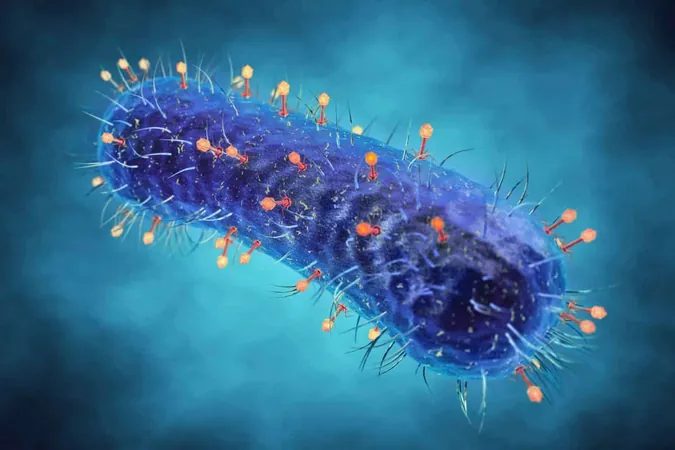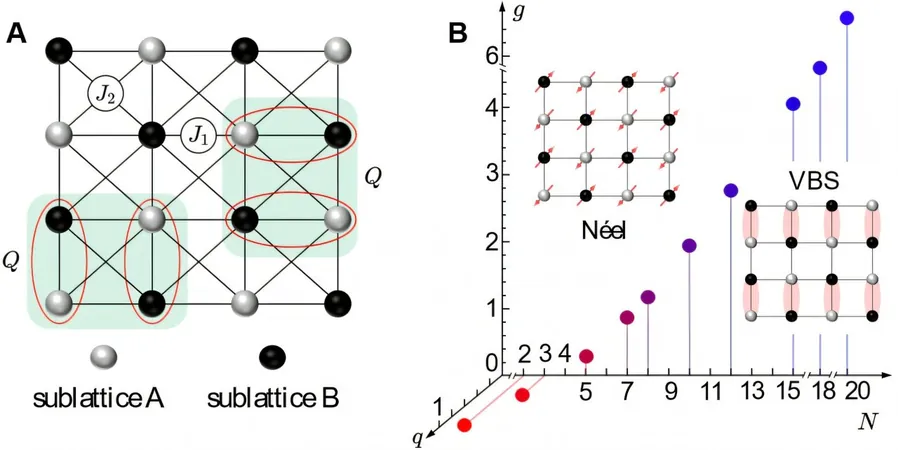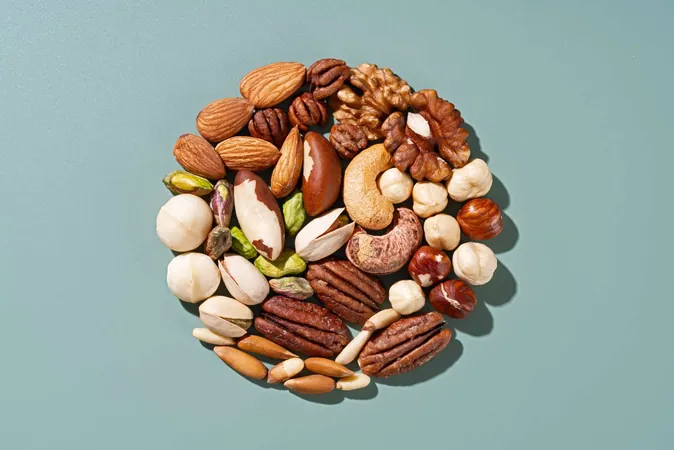
Shocking Discovery: Bacteria Were Breathing Oxygen Nearly a Billion Years Earlier Than Believed!
2025-04-08
Author: Rajesh
A Deep Dive into Early Oxygen Use: Long Before The Great Oxidation Event
Historically, scientists operated under the assumption that bacteria were exclusively anaerobic until the Great Oxidation Event (GOE), which occurred around 2.4 billion years ago, marking a pivotal moment when oxygen began to accumulate in the Earth's atmosphere. However, a novel study spearheaded by Dr. Adrián Arellano Davín at the Okinawa Institute of Science and Technology (OIST) has revealed that certain lineages of bacteria adapted to utilize oxygen as far back as 900 million years prior to the GOE. These findings imply that localized pockets of oxygen may have existed in isolated environments much earlier than previously recognized.
Unlocking Evolutionary Secrets Through Genome Analysis
The research team employed advanced machine learning techniques in combination with phylogenetic analysis across a diverse dataset of 1,007 bacterial genomes. This allowed them to accurately trace when specific microbes made the evolutionary leap from anaerobic to aerobic metabolism. 'This innovative merger of genomic data, fossil analysis, and geological history brings a new level of clarity to evolutionary timelines, particularly for microbial groups that lack a fossil record,' noted Professor Gergely Szöllősi, head of the Model-based Evolutionary Genomics Unit at OIST.
A Game-Changer: Oxygen-Based Metabolism Offers Early Microbes a Edge
The efficiency of oxygen-based metabolism surpasses that of anaerobic processes, making it a significant factor in early survival. Even trace amounts of oxygen could have enabled ancient bacteria to generate more energy, enhancing their chances of survival and proliferation. This evolutionary advantage may have facilitated the rapid diversification of aerobic lineages, laying the critical biochemical foundations for later photosynthetic organisms. Dr. Tom Williams from the University of Bristol’s School of Biological Sciences added, 'Our study illustrates that utilizing machine learning to model microbial traits from their genomes effectively aids in understanding the spread of aerobic metabolic processes.'
Cyanobacteria's Evolution Reexamined: A Parallel Development?
Moreover, the study sheds new light on the evolution of cyanobacteria, the group of microbes credited with oxygenic photosynthesis. Remarkably, there is evidence suggesting that an ancestor of cyanobacteria may have already possessed oxygen tolerance, potentially paving the way for the emergence of photosynthetic genes. This finding supports the notion that oxygen usage and photosynthesis may have developed concurrently, challenging traditional views of the timeline of metabolic innovations in early life forms.
Revolutionizing Microbial History Through Data Integration
By integrating genomic, fossil, and geochemical data, researchers have charted evolutionary family trees that trace bacterial history back to the Hadean and early Archaean periods, over 3.9 billion years ago. The findings reveal that many traits associated with aerobic metabolism likely emerged before significant atmospheric changes, albeit within specific niches. 'Our integrative approach not only clarifies when bacteria evolved but also how they adapted to their environments,' explained Dr. Davín. This vital research not only reshapes our understanding of the timeline of early life but also opens new pathways for scientific exploration into how life may adapt to changing environments in the future. Stay tuned, as further discoveries may yet unveil even more astonishing secrets hidden in Earth's ancient microbial history!



 Brasil (PT)
Brasil (PT)
 Canada (EN)
Canada (EN)
 Chile (ES)
Chile (ES)
 Česko (CS)
Česko (CS)
 대한민국 (KO)
대한민국 (KO)
 España (ES)
España (ES)
 France (FR)
France (FR)
 Hong Kong (EN)
Hong Kong (EN)
 Italia (IT)
Italia (IT)
 日本 (JA)
日本 (JA)
 Magyarország (HU)
Magyarország (HU)
 Norge (NO)
Norge (NO)
 Polska (PL)
Polska (PL)
 Schweiz (DE)
Schweiz (DE)
 Singapore (EN)
Singapore (EN)
 Sverige (SV)
Sverige (SV)
 Suomi (FI)
Suomi (FI)
 Türkiye (TR)
Türkiye (TR)
 الإمارات العربية المتحدة (AR)
الإمارات العربية المتحدة (AR)